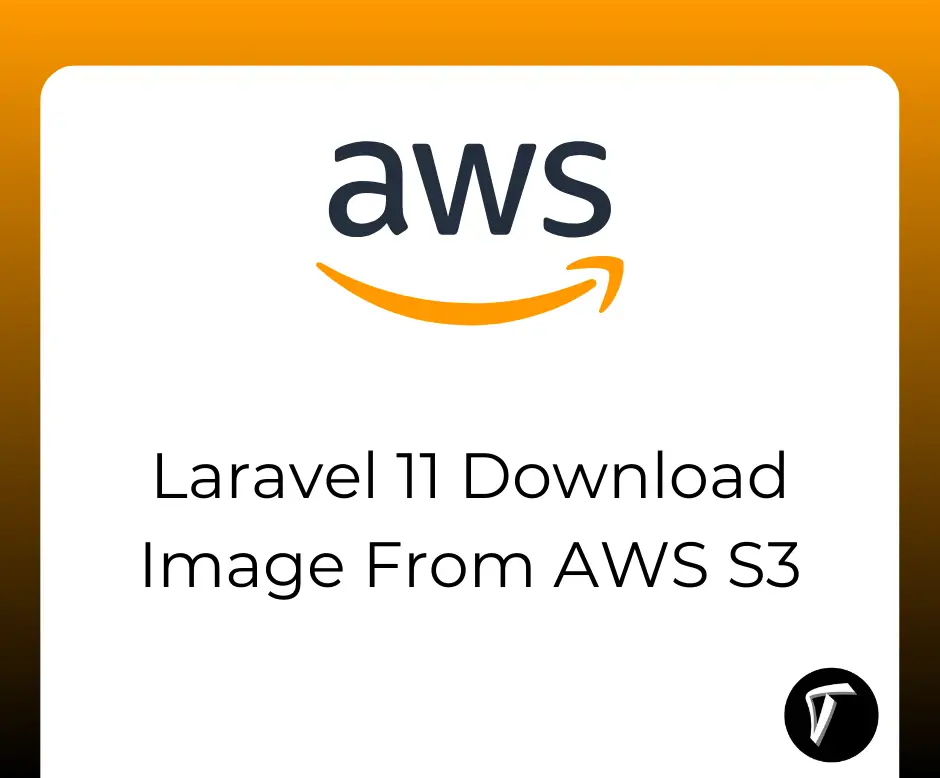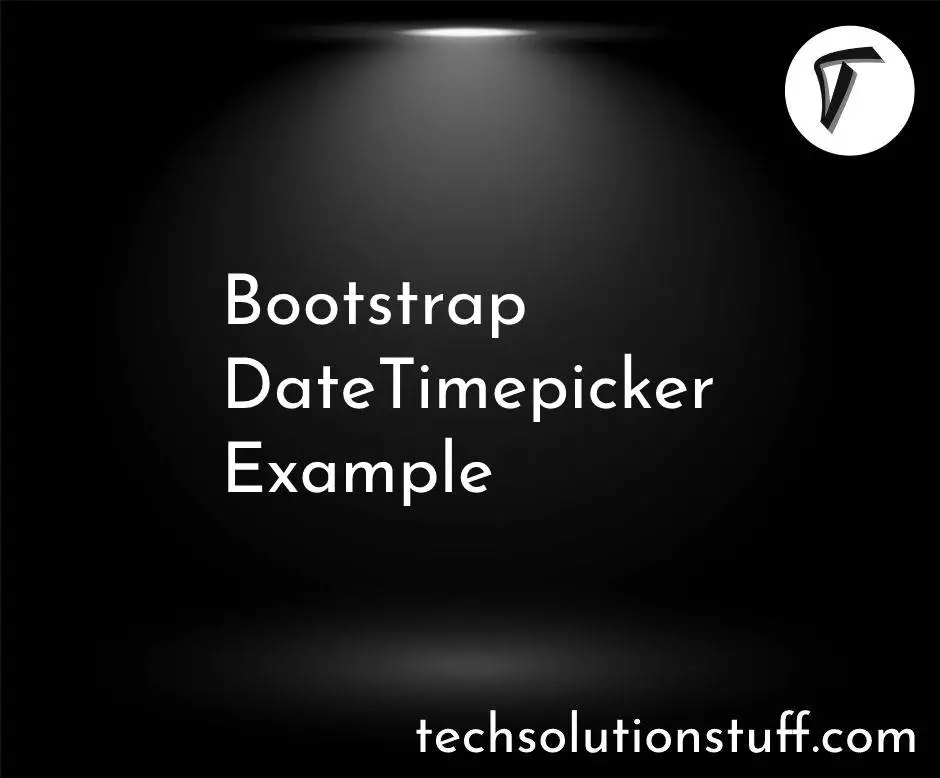How To Integrate Paypal Payment Gateway In Laravel 8
In this tutorial we will see how to integrate paypal payment gateway in laravel 8, payment integatetion is very useful and important features in e-commerce website. I will explain you laravel 8 paypal payment integration example. You can also use paypal payment gateway integration in larave 8, laravel 7 and laravel 6.
PayPal is an American company operating a worldwide online payments system that supports online money transfers and serves as an electronic alternative to traditional paper methods like checks and money orders.
So, let's start to implements laravel 8 paypal payment integration.
Step 2 : Create Database Configuration
Step 3 : Configuration PHP File of Paypal Integration
Step 4 : Add Routes in web.php
Step 5 : Create PaypalController
Step 6 : Create Blade file For View
We are creating new project setup for this paypal integration example ,So create new project using below command.
composer create-project --prefer-dist laravel/laravel paypal_payment_integration
We will setup database configuration for example database name, username, password etc.
DB_CONNECTION=mysql
DB_HOST=127.0.0.1
DB_PORT=3306
DB_DATABASE=Your_Database_Name
DB_USERNAME=Your_Database_Username
DB_PASSWORD=Your_Database_Password
Run the following command in your project to get the latest version of the paypal API package using composer.
composer require paypal/rest-api-sdk-php
After installation of paypal package we required client_id and secret_key for paypal integration, so we need to login in paypal developer mode and create a new sandbox account for same. After login in paypal you need to get client_id and secret_key like below screenshot. before getting client_id and secret_key we need to create application. So, check below screenshot and create application.
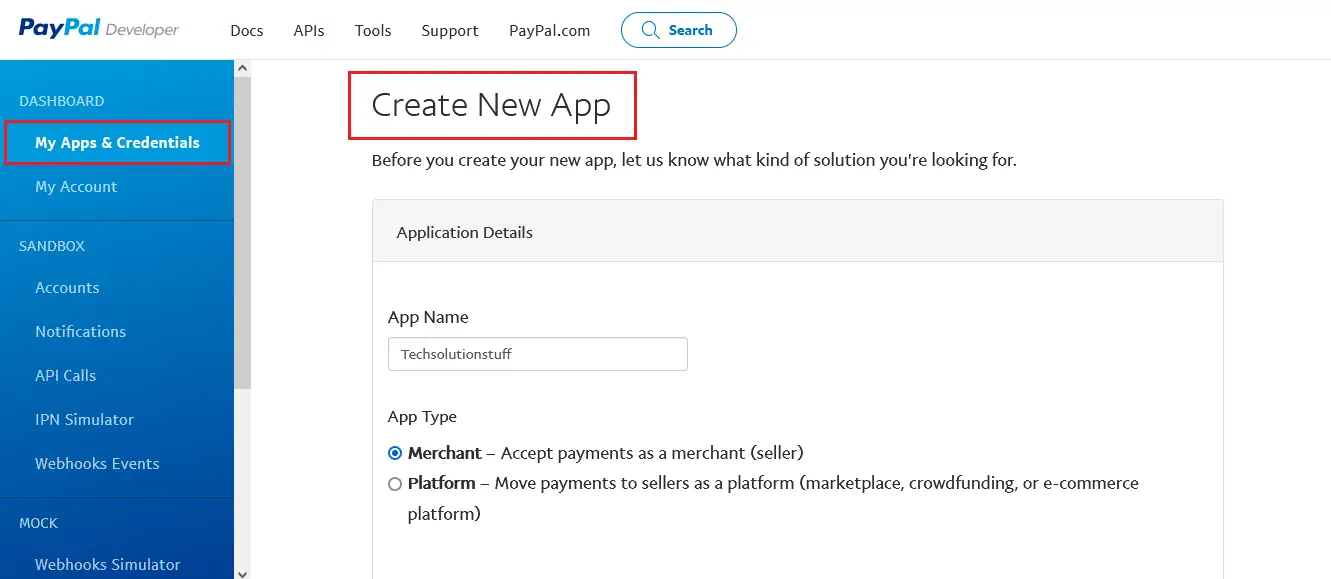
After create application click on created application and get client_id and secret_key from that application.
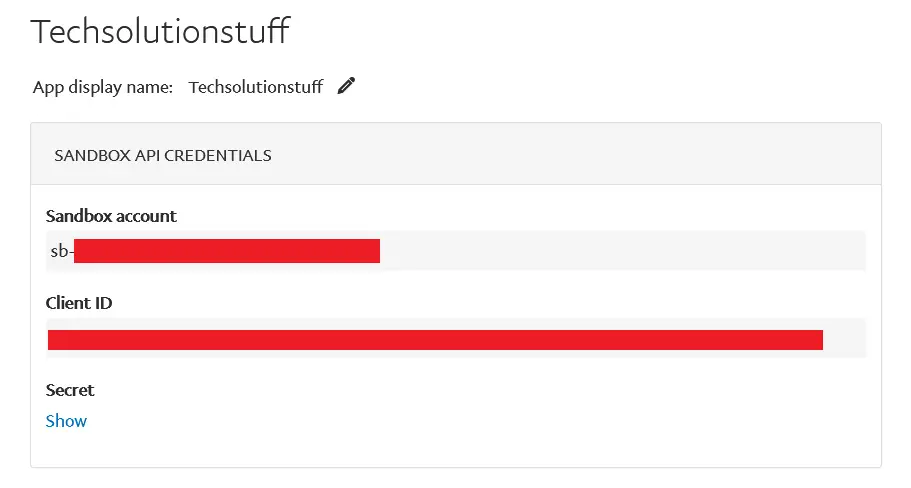
Now, we need to configure paypal.php file So, I have manually created one file in config/paypal.php and add below code.
<?php
return [
'client_id' => 'XXXXXX',
'secret' => 'XXXXXX',
'settings' => array(
'mode' => 'sandbox',
'http.ConnectionTimeOut' => 1000,
'log.LogEnabled' => true,
'log.FileName' => storage_path() . '/logs/paypal.log',
'log.LogLevel' => 'FINE'
),
];
Now, I have created route as below.
<?php
use Illuminate\Support\Facades\Route;
Route::get('paywithpaypal', array('as' => 'paywithpaypal','uses' => 'PaypalController@payWithPaypal',));
Route::post('paypal', array('as' => 'paypal','uses' => 'PaypalController@postPaymentWithpaypal',));
Route::get('paypal', array('as' => 'status','uses' => 'PaypalController@getPaymentStatus',));
Created controller to manage all the PayPal related logics.So, copy below code in PaypalController.
<?php
namespace App\Http\Controllers;
use App\Http\Requests;
use Illuminate\Http\Request;
use Validator;
use URL;
use Session;
use Redirect;
use Input;
use PayPal\Rest\ApiContext;
use PayPal\Auth\OAuthTokenCredential;
use PayPal\Api\Amount;
use PayPal\Api\Details;
use PayPal\Api\Item;
use PayPal\Api\ItemList;
use PayPal\Api\Payer;
use PayPal\Api\Payment;
use PayPal\Api\RedirectUrls;
use PayPal\Api\ExecutePayment;
use PayPal\Api\PaymentExecution;
use PayPal\Api\Transaction;
class PaypalController extends Controller
{
private $_api_context;
public function __construct()
{
$paypal_configuration = \Config::get('paypal');
$this->_api_context = new ApiContext(new OAuthTokenCredential($paypal_configuration['client_id'], $paypal_configuration['secret']));
$this->_api_context->setConfig($paypal_configuration['settings']);
}
public function payWithPaypal()
{
return view('paywithpaypal');
}
public function postPaymentWithpaypal(Request $request)
{
$payer = new Payer();
$payer->setPaymentMethod('paypal');
$item_1 = new Item();
$item_1->setName('Product 1')
->setCurrency('USD')
->setQuantity(1)
->setPrice($request->get('amount'));
$item_list = new ItemList();
$item_list->setItems(array($item_1));
$amount = new Amount();
$amount->setCurrency('USD')
->setTotal($request->get('amount'));
$transaction = new Transaction();
$transaction->setAmount($amount)
->setItemList($item_list)
->setDescription('Enter Your transaction description');
$redirect_urls = new RedirectUrls();
$redirect_urls->setReturnUrl(URL::route('status'))
->setCancelUrl(URL::route('status'));
$payment = new Payment();
$payment->setIntent('Sale')
->setPayer($payer)
->setRedirectUrls($redirect_urls)
->setTransactions(array($transaction));
try {
$payment->create($this->_api_context);
} catch (\PayPal\Exception\PPConnectionException $ex) {
if (\Config::get('app.debug')) {
\Session::put('error','Connection timeout');
return Redirect::route('paywithpaypal');
} else {
\Session::put('error','Some error occur, sorry for inconvenient');
return Redirect::route('paywithpaypal');
}
}
foreach($payment->getLinks() as $link) {
if($link->getRel() == 'approval_url') {
$redirect_url = $link->getHref();
break;
}
}
Session::put('paypal_payment_id', $payment->getId());
if(isset($redirect_url)) {
return Redirect::away($redirect_url);
}
\Session::put('error','Unknown error occurred');
return Redirect::route('paywithpaypal');
}
public function getPaymentStatus(Request $request)
{
$payment_id = Session::get('paypal_payment_id');
Session::forget('paypal_payment_id');
if (empty($request->input('PayerID')) || empty($request->input('token'))) {
\Session::put('error','Payment failed');
return Redirect::route('paywithpaypal');
}
$payment = Payment::get($payment_id, $this->_api_context);
$execution = new PaymentExecution();
$execution->setPayerId($request->input('PayerID'));
$result = $payment->execute($execution, $this->_api_context);
if ($result->getState() == 'approved') {
\Session::put('success','Payment success !!');
return Redirect::route('paywithpaypal');
}
\Session::put('error','Payment failed !!');
return Redirect::route('paywithpaypal');
}
}
Now, we need to create one blade file for view so, add below code in your paywithpaypal.php file.
<html>
<head>
<meta charset="utf-8">
<title>How to integrate paypal payment in Laravel - Techsolutionstuff</title>
<link href="https://stackpath.bootstrapcdn.com/bootstrap/3.4.1/css/bootstrap.min.css" rel="stylesheet">
<script src="https://code.jquery.com/jquery-3.5.1.min.js"></script>
<script src="https://stackpath.bootstrapcdn.com/bootstrap/3.4.1/js/bootstrap.min.js"></script>
</head>
<body>
<div class="container">
<div class="row">
<div class="col-md-8 col-md-offset-2">
<h3 class="text-center" style="margin-top: 90px;">How to integrate paypal payment in Laravel - Techsolutionstuff</h3>
<div class="panel panel-default" style="margin-top: 60px;">
@if ($message = Session::get('success'))
<div class="custom-alerts alert alert-success fade in">
<button type="button" class="close" data-dismiss="alert" aria-hidden="true"></button>
{!! $message !!}
</div>
<?php Session::forget('success');?>
@endif
@if ($message = Session::get('error'))
<div class="custom-alerts alert alert-danger fade in">
<button type="button" class="close" data-dismiss="alert" aria-hidden="true"></button>
{!! $message !!}
</div>
<?php Session::forget('error');?>
@endif
<div class="panel-heading"><b>Paywith Paypal</b></div>
<div class="panel-body">
<form class="form-horizontal" method="POST" id="payment-form" role="form" action="{!! URL::route('paypal') !!}" >
{{ csrf_field() }}
<div class="form-group{{ $errors->has('amount') ? ' has-error' : '' }}">
<label for="amount" class="col-md-4 control-label">Enter Amount</label>
<div class="col-md-6">
<input id="amount" type="text" class="form-control" name="amount" value="{{ old('amount') }}" autofocus>
@if ($errors->has('amount'))
<span class="help-block">
<strong>{{ $errors->first('amount') }}</strong>
</span>
@endif
</div>
</div>
<div class="form-group">
<div class="col-md-6 col-md-offset-4">
<button type="submit" class="btn btn-primary">
Paywith Paypal
</button>
</div>
</div>
</form>
</div>
</div>
</div>
</div>
</div>
</body>
</html>
Now create Paypal sandbox test account for like below screenshot.
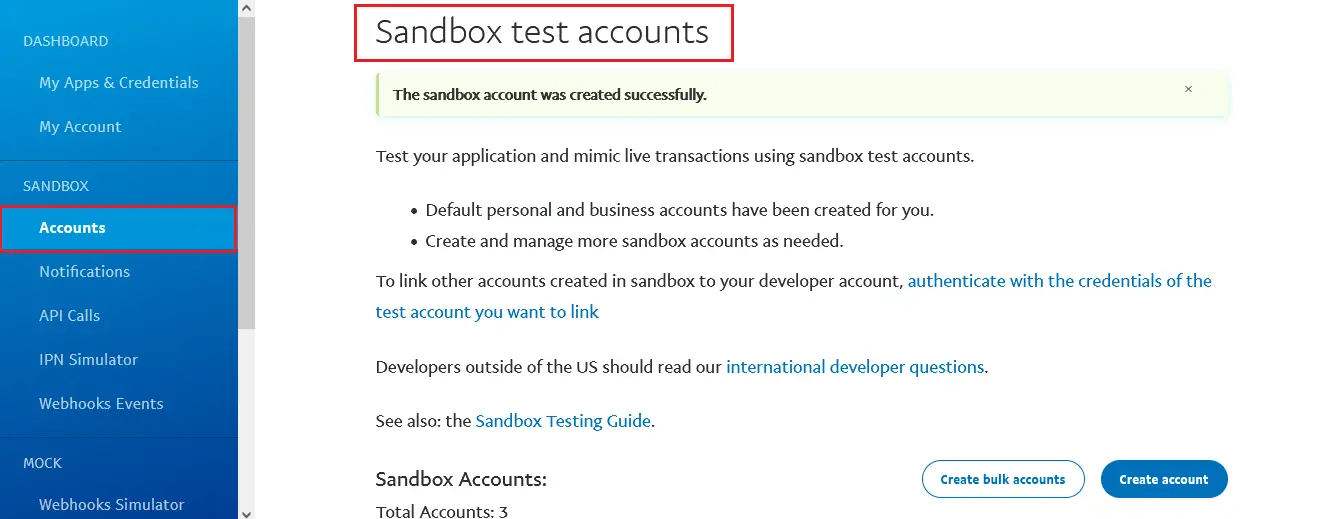
once you will enter amount you will get form like this.if you don't have an account then you need to create account first.
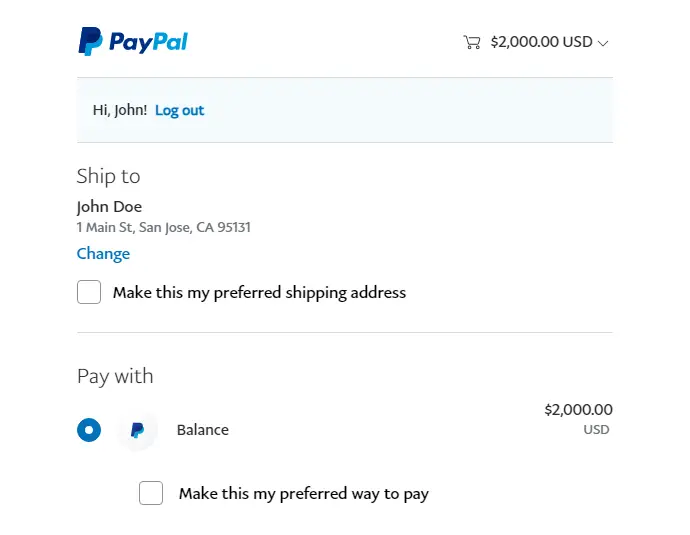
After click on continue you will get success form like below screenprint.
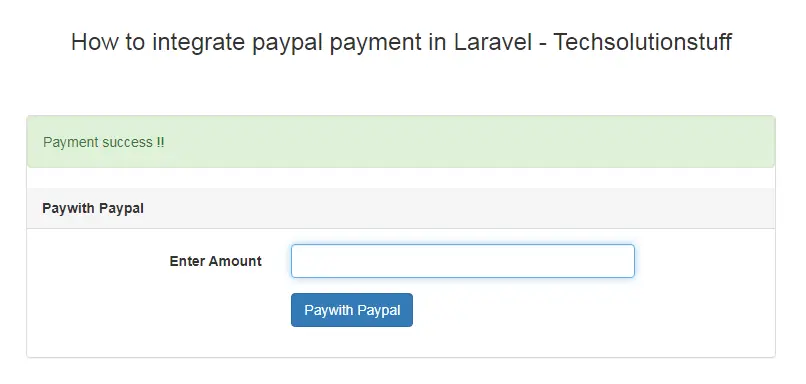
Once you will get this view then after it will show another success messge form of your transection. click here to check your transaction.

Finally tutorial is completed,I hope you will get your output like this.
You might also like :
- Read Also : CRUD Operation In PHP
- Read Also : How To Generate Barcode In Laravel
- Read Also : Laravel AJAX CRUD Example Tutorial
- Read Also : How To Create Dynamic Pie Chart In Laravel





